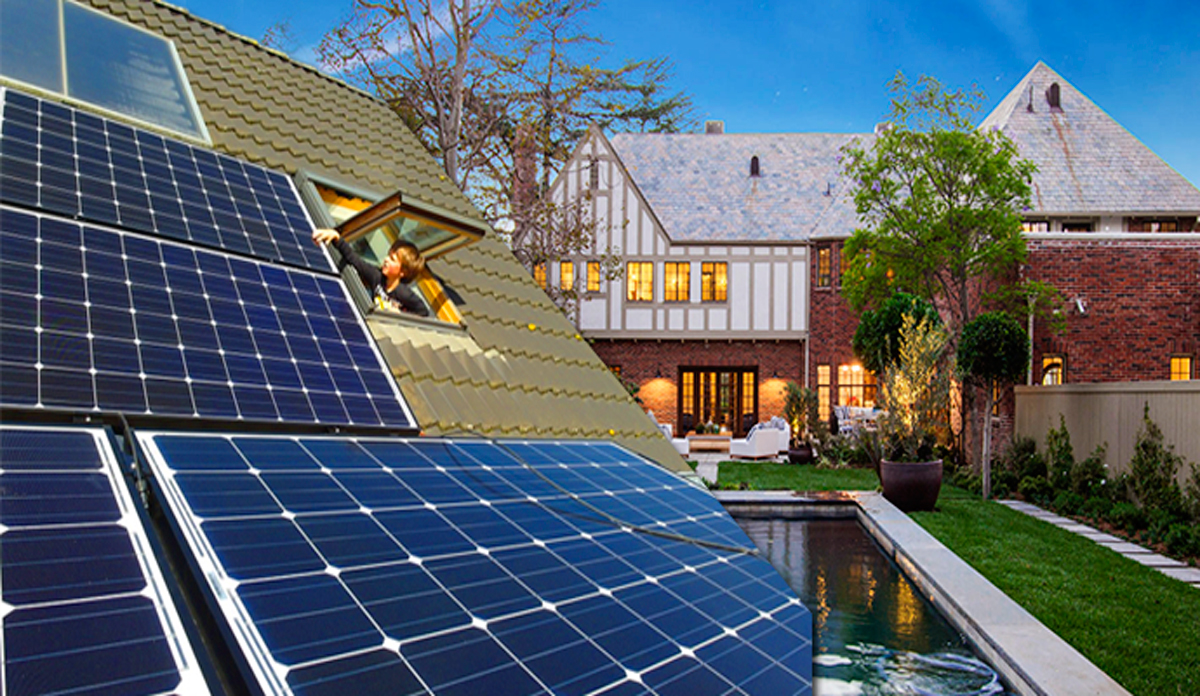Trending
Solar SoCal: California’s latest mandate could boost costs for consumers, but have little impact at luxe level
Installing solar power in a 6k sf home could cost around $60K, experts say

With California set to be the first state in the country to require solar panels on most new homes, developers and homeowners in the Golden State will have to adapt to a new reality starting in 2020.
The added costs will trickle down to the buyer in the lower end of the market and continue to push home prices up, industry experts said Thursday. But few expect much to change at the luxury level.
On Wednesday, California became the first state in the nation to require solar panels for new construction. The mandate, which will take effect in 2020, will require new single-family homes and small multifamily buildings to abide by the new energy-efficient standards, with a few exceptions for buildings covered by shade.
In Los Angeles, where low inventory has pushed prices to record levels, the new requirement will likely translate to even higher home prices as developers pass on the added costs to buyers.
Installing a solar power system would add roughly $9,500 to the cost of a new home, according to the California Energy Commission. For a 5,000-square-foot home, that cost could quickly rise to $60,000, said Ramtin Ray Nosrati, founder of Huntington Estates.
Many are hopeful that costs to the consumer will eventually cancel out though, considering the panels could decrease a home’s energy bill. In fact, it could ultimately save a homeowner about $19,000 over the span of 30 years, according to the energy commission.
George Jordan, vice president at ANR Development, a luxury developer based in Beverly Grove, said he supports the mandate but conceded that the company “would need to account for it in our development budget.”
When Jordan got the news that California would be making solar power a requirement, he was happy for his brother, a solar power consultant based in New York who’s been looking to ramp up his business on the West Coast.
But the new mandate will force Jordan to adapt to new building standards and enter unfamiliar territory. In nearly 4,000 home projects in Southern California, his company has yet to incorporate solar panels.
“Up until recently, solar panels didn’t really integrate aesthetically with more traditional architecture that had tile roofs,” Jordan said. He also hasn’t seen much demand for solar among prospective buyers, resulting in a greater “emphasis on other enhancements or improvements that … were more valuable to homebuyers in the market.”
Other multifamily developers, such as Jason Illoulian of Faring, said he doesn’t expect the new mandate to have much impact on his business since he’s already building energy-efficient properties.
The company’s slate of projects are all LEED Silver or LEED Gold, Illoulian said, referring to the green building rating system. Faring’s projects are mainly based in West Hollywood, and include a mixed-use project named Robertson Lane, as well as an adaptive reuse of the French Market Place.
The new mandate’s effects will be limited in the luxury market, where skyrocketing sticker prices are already accounting for much of the construction costs, industry experts said. “On the high-end construction, when you’re paying $10 million for the property, I don’t think it’s going to make or break the developer or the buyer,” Nosrati said.
In Palm Springs, city officials have been one step ahead of the state. The developers behind the 1,150-home Miralon community had to include solar in order just to receive entitlements for the project, said Brad Shuckhart, whose is developing infrastructure on the site.
“It is certainly the way things are evolving and I would expect that any builder, even without the condition, would install at least a small solar array,” said Shuckhart, president of Freehold Communities’ California division.
Solar roof quandary
SPF:architects’ principal Zoltan Pali said his firm is already implementing solar into many of its single-family projects. As for design, he doesn’t expect the new mandate will cause any “major shift” in architecture, except for the few architects that decide to “take it further and experiment” with solar panels.
That’s just what some developers, like Nosrati, are hoping for: to avoid solar panels taking up roof space.
Since solar panels are traditionally built on roofs, the new mandate could drastically limit what developers can build there. Nosrati, who builds largely in Brentwood and the Pacific Palisades, often will use synthetic glass or a wood deck on the roof to create a deck with some added amenities.
“My buyers love being able to go on the roof and put a jacuzzi tub in and enjoy the California weather,” Nosrati said. “These solar panels are going to take the space on that.”
He added that the panels are going to create “an ugly look for the whole neighborhood.”
Shawn Elliott, a broker at Nest Seekers, who has seen solar panels becoming more popular, said he expects developers like Nosrati will ultimately have to give in.
“At the end of the day, people buy quality,” Elliott said. “I think a builder needs to know it’s going to help him sell faster than the guy that doesn’t have solar panels.”




